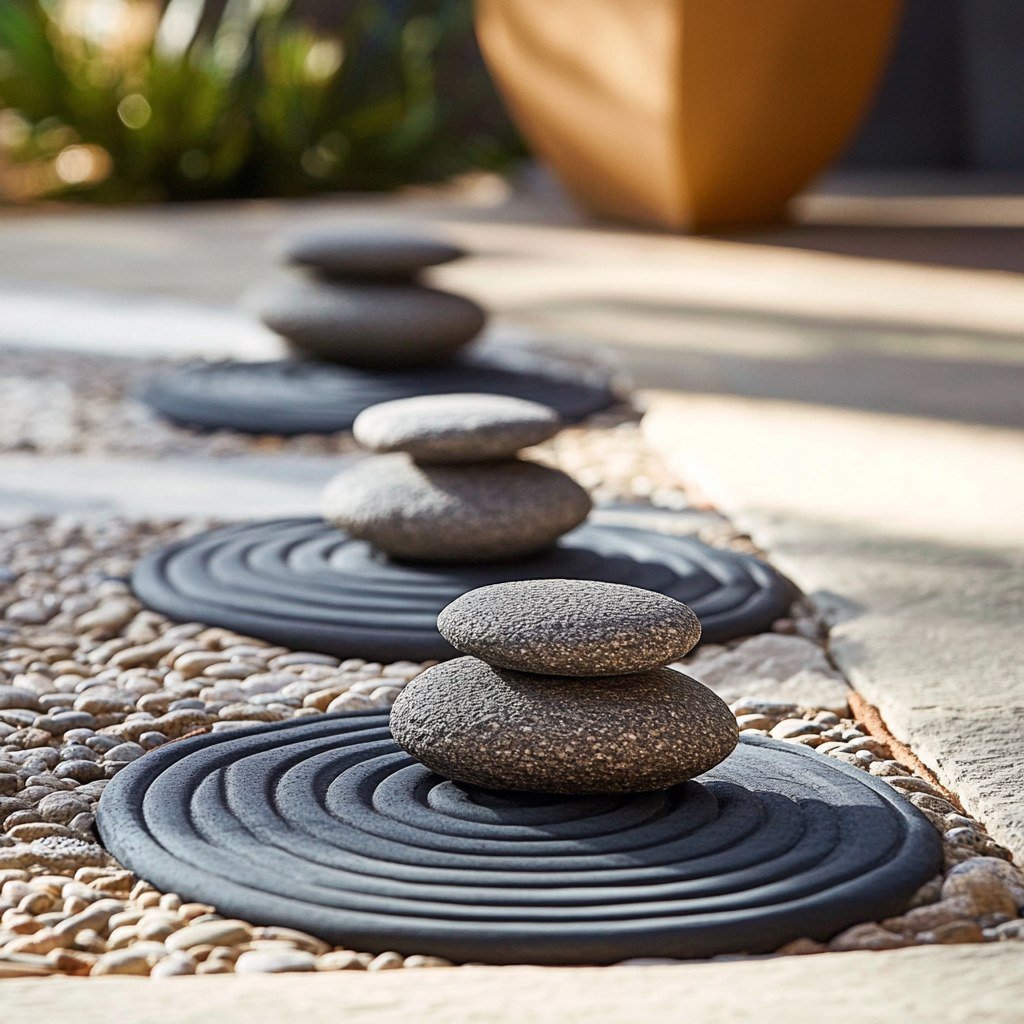A Zen garden offers more than just aesthetic appeal; it serves as a peaceful retreat from daily stress. Rooted in ancient Japanese tradition, these gardens provide a space for meditation, reflection, and mindfulness. Whether you have a large outdoor area or a small corner in your home, creating a Zen garden is easier than you think. In this article, we’ll explore tips and ideas to design a tranquil Zen garden that can bring calm and harmony to your space.
The Best Ways to Improve Your Roof’s Energy Efficiency | The Best Plumbing Tools Every Homeowner Should Have
How to Prune Your Plants for Optimal Growth | How to Plan a Year-Round Vegetable Garden
What Is a Zen Garden?
Zen gardens, also known as Japanese rock gardens or “kare-sansui,” use simple elements like rocks, gravel, sand, and minimal greenery to create a space for meditation and relaxation. Unlike traditional gardens full of colourful flowers, Zen gardens focus on minimalism and symbolism.
Key Elements of a Zen Garden
- Rocks – Symbolizing mountains or islands, rocks are often the focal points.
- Gravel or Sand – Represents water, with patterns raked into the surface to mimic ripples.
- Plants – Minimalistic plants like moss or bamboo add softness and life.
- Water Features – Optional but highly calming, a small pond or fountain can enhance tranquillity.
- Bridges or Pathways – Helps create a journey-like experience through the garden.
Step-by-Step Guide to Creating a Zen Garden
Step 1: Choose Your Space
Begin by identifying the right spot for your Zen garden. It could be an outdoor corner of your backyard or even a small indoor area like a balcony or patio. The space doesn’t need to be large, but it should be calm and quiet.
Step 2: Clear and Level the Area
Remove any debris, plants, or clutter from the designated space. Ensure the area is level so that sand or gravel can be evenly distributed. If you’re working indoors, consider a raised bed or shallow container to contain your Zen elements.
Step 3: Create Boundaries
Outline the garden’s perimeter using stones, wooden borders, or plants. This boundary creates a defined space, giving your Zen garden structure. Indoors, a rectangular or circular container can serve this purpose.
Step 4: Add Rocks
Place large stones strategically around the garden to represent mountains or islands. Arrange them naturally—avoid symmetry, as irregularity is key to achieving an organic feel.
Step 5: Spread Gravel or Sand
Spread a layer of sand or gravel to cover the base. This will represent water. You can rake the surface to create ripples or patterns that symbolize movement. This part of the process is very meditative and can be done regularly for relaxation.
Step 6: Incorporate Minimalistic Plants
Incorporate small plants like moss, succulents, or bamboo in selected spots. Avoid overplanting; Zen gardens are all about simplicity. If you’re working indoors, use potted plants or bonsai trees.
Step 7: Optional Water Features
If your space allows, consider adding a small water feature like a fountain or stone basin. The sound of trickling water can enhance the peaceful atmosphere of your Zen garden.
Zen Garden Maintenance Tips
Maintaining a Zen garden is straightforward, but regular upkeep will ensure it remains a place of tranquillity.
- Rake the Sand or Gravel – Regularly rake the surface to maintain the patterns and keep the area looking tidy.
- Weed Control – In outdoor gardens, keep an eye on weeds and remove them promptly to maintain the minimalist design.
- Prune Plants – Trim any plants or mosses to maintain their shape and size. Overgrown greenery can disrupt the balance of a Zen garden.
Benefits of a Zen Garden
Zen gardens offer numerous mental and physical benefits.
- Stress Reduction: The repetitive action of raking sand or arranging rocks helps reduce anxiety.
- Encourages Mindfulness: Spending time in a Zen garden encourages a state of mindfulness and present-moment awareness.
- Aesthetic Appeal: Zen gardens add a simple, elegant beauty to your surroundings, both indoors and outdoors.
- Low Maintenance: Compared to traditional gardens, Zen gardens require minimal upkeep, making them perfect for those with busy lifestyles.

Summary Table
| Key Elements | Function |
| Rocks | Represent mountains or islands |
| Gravel or Sand | Symbolize water |
| Minimalistic Plants | Add subtle greenery and life |
| Water Features | Optional, provides a calming sound |
| Pathways | Create a journey-like experience through the garden |
Creating a Zen garden is an enriching project that brings both beauty and tranquillity into your life. By using simple elements like rocks, gravel, and minimalistic plants, you can transform any space into a peaceful retreat for meditation and reflection. Whether you’re seeking stress relief or a new creative outlet, a Zen garden offers both mental and physical benefits.
FAQs
You’ll need rocks, gravel or sand, and minimalistic plants like moss. Optional items include water features or pathways.
Yes! You can create a small indoor Zen garden using a shallow container, sand, and a few rocks or plants.
Zen gardens can be made in any size space, from a large backyard to a small table-top garden.
Zen gardens require minimal maintenance. Rake the gravel or sand regularly and prune any plants to keep the garden tidy.
The purpose of a Zen garden is to provide a space for meditation, reflection, and mindfulness, helping to reduce stress and encourage calmness.




